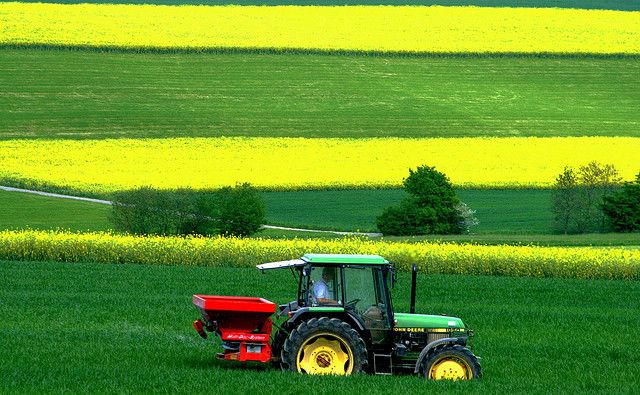
Title
By Stephen Russell - May 14, 2012
This article was originally posted on the WRI blog, Insights, and also appears on GreenBiz.com.
Thousands of companies have developed greenhouse gas (GHG) inventories in recent years as a crucial first step towards measuring and ultimately reducing their emissions. Agricultural emissions are a large part of many of those inventories: farming is currently responsible for between 10 and 12 percent of global GHG emissions. Globally, agricultural emissions are expected to increase by more than 50 percent by 2030, according to the UN Intergovernmental Panel on Climate Change (IPCC).
There is much uncertainty about how agricultural emissions should be reported in GHG inventories, a situation that hinders measurement and reduction efforts in the sector. To address this issue, the Greenhouse Gas Protocol is developing industry-wide best practices for reporting agricultural GHG emissions.
Why are agricultural GHG emissions so challenging?
Agricultural emissions are difficult to consistently measure and report because:
-
The emissions are strongly affected by weather and natural landscapes. As a result, emissions from any one farm can vary widely over time due to droughts, heat waves, and other factors. Companies need to understand and account for these effects if they are going to track the impacts of changes in farming practices.
-
Agricultural emissions are often calculated with a high amount of uncertainty. This is because GHG emissions from many agricultural sources, such as manure management and livestock, are shaped by complex microbial processes that are not fully understood. Such data uncertainty has to be transparently reported to enable effective decision-making.
-
Changes in the amount of carbon stored in soil and biomass do not occur at the same time as shifts in farming practices. For example, a farm may switch from high-intensity tilling (a practice associated with high emissions) to conservation tillage (a practice associated with lower emissions), but the benefit would only accumulate over time as the soil carbon slowly builds up. This issue can make it difficult for companies to know if and when they should report changes in stored carbon.
-
Companies vary widely in the extent to which they control different parts of agricultural supply chains, such as commodity production, processing, and retail. This issue can impact incentives to actually report GHG emissions as well as the comparability of GHG inventories.
What is the GHG Protocol doing to improve agricultural emissions management?
The GHG Protocol has been working for the past two years to develop a draft Agricultural Guidance, a new supplement to the 10-year-old Corporate Standard, outlining how companies can conduct GHG emissions inventories. The Agricultural Guidance explains how producers and their customers can report agricultural emissions in a consistent way and develop inventories that can be used to:
- Identify and prioritize reduction opportunities at the farm level,
- Set and track progress toward reduction targets, and
- Communicate progress to customers and civil society.
The GHG Protocol recently convened a workshop to review the Agricultural Guidance. More than 30 experts from business, government, academia, and non-governmental organizations were in attendance, and they emphasized the strong need for guidance that harmonizes accounting approaches in agriculture.
The workshop confirmed key components of the Agricultural Guidance, such as how to track emissions performance over time. It also highlighted other key issues to explore. For example, one area that needs further study is whether qualitative information on farming practices can ever substitute for GHG emissions data. Another was how inventories can be used to track the climate impact of agriculture-driven deforestation, particularly when deforested land has been sold to new owners. Finally, participants discussed the land lease contracts that producers can enter into with U.S. government land owners (e.g., Bureau of Land Management) and how the Agricultural Guidance should play a pivotal role in defining how GHG emissions from leased land should be reported.
The issues raised during the workshop emphasize the importance of consistent GHG measurement and the need to develop industry-accepted best practices that offer a credible approach to reporting emissions.
The GHG Protocol team is currently integrating workshop feedback into the Agricultural Guidance and expects to release the final document in late 2012. With the new guidance, the agricultural sector will have a valuable tool to accurately measure and report GHG emissions.
“Agricultural outputs are the key inputs for many food, beverage and biofuel products, and it is important for agricultural companies voluntarily reporting their greenhouse gas emissions to do so in a consistent and transparent way,” said Nick Shufro, a workshop participant and PricewaterhouseCoopers representative. “The draft WRI Agricultural Sector supplement provides important guidance for agricultural companies looking to report their greenhouse gas emissions in a credible fashion.”